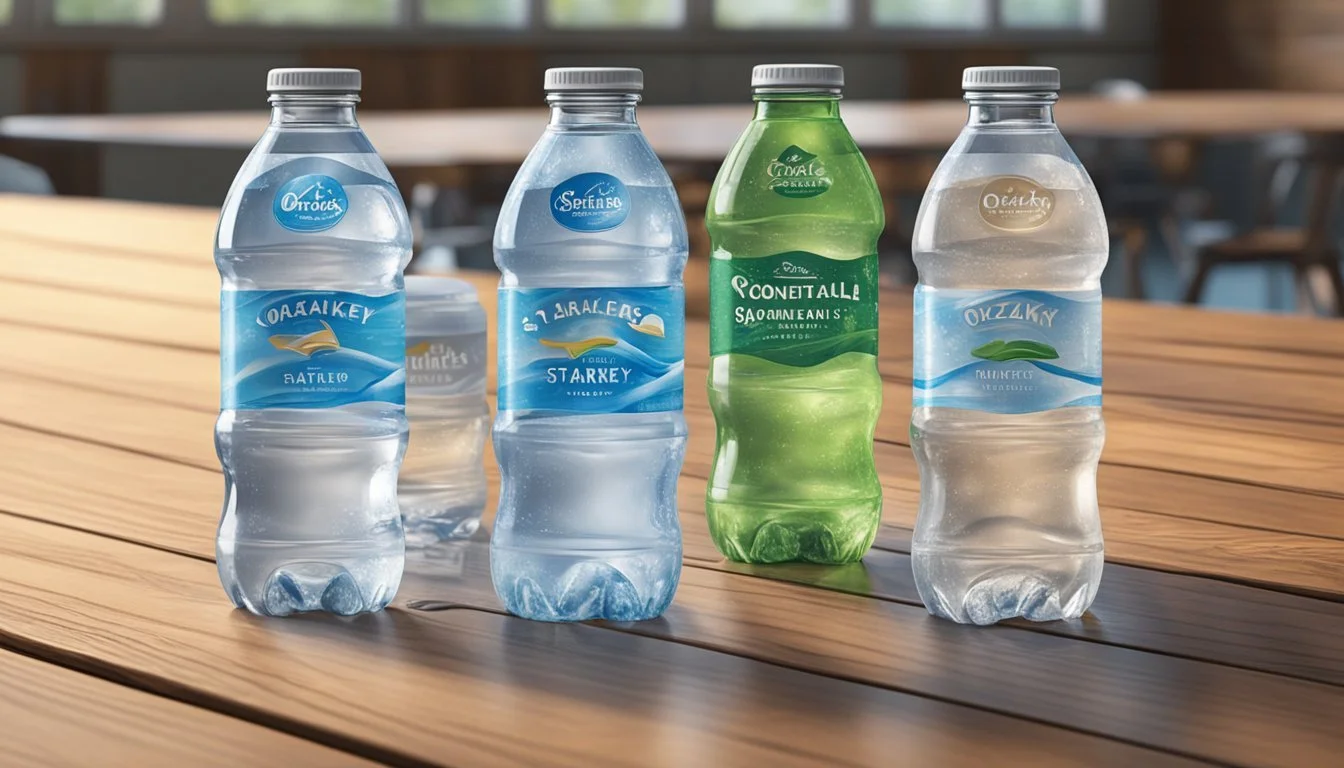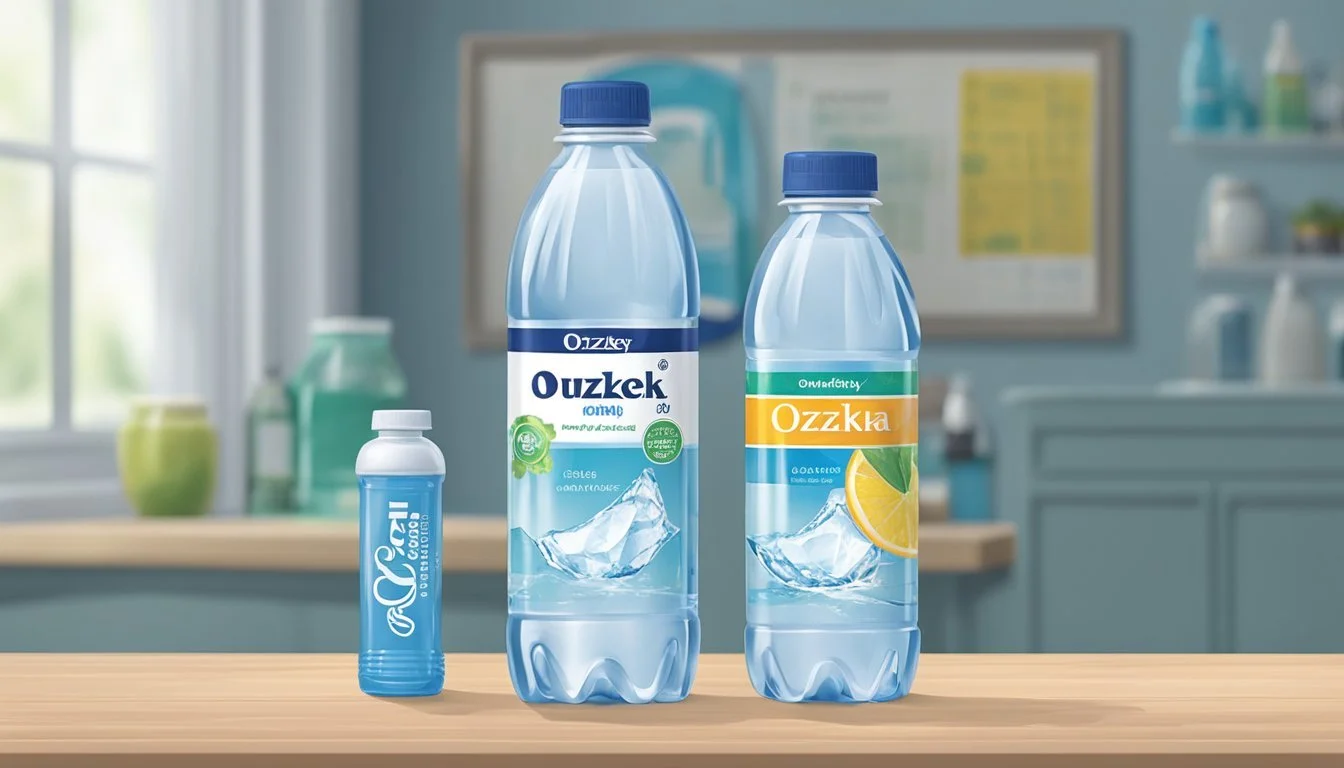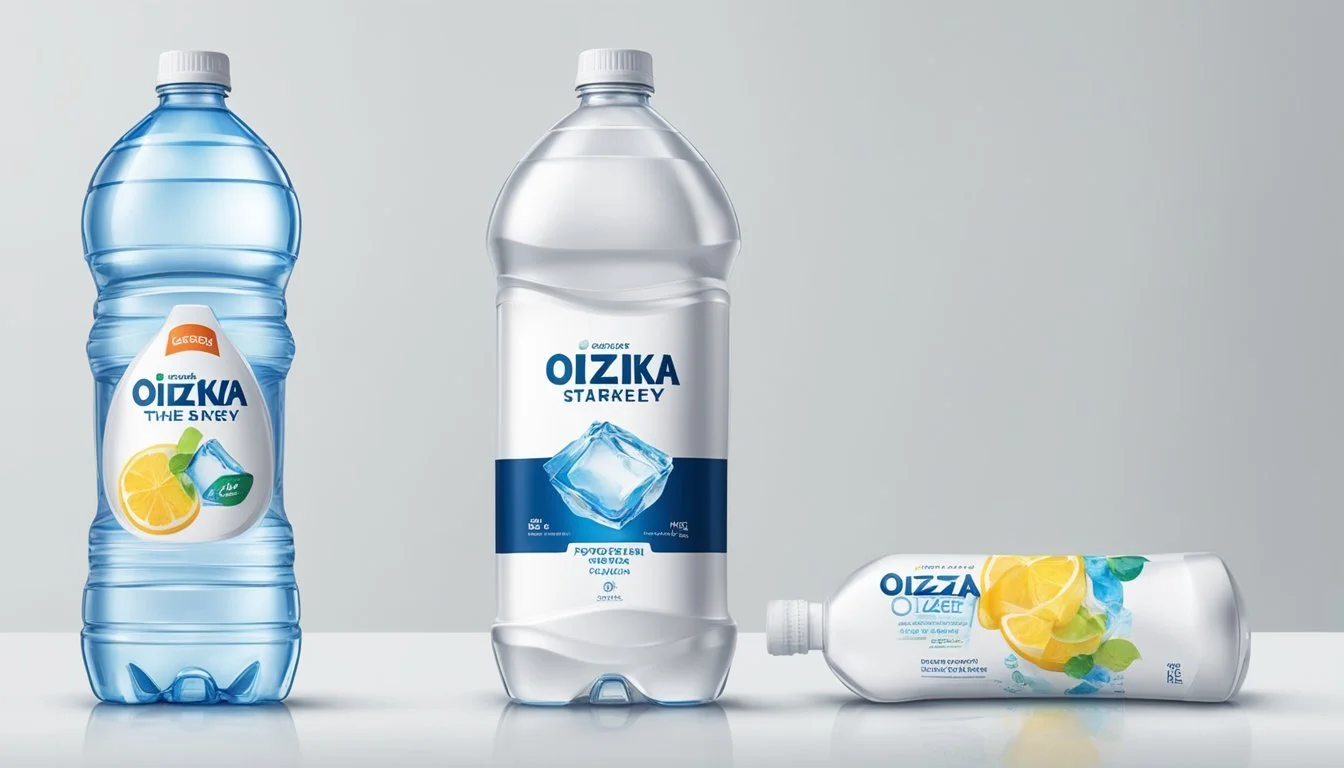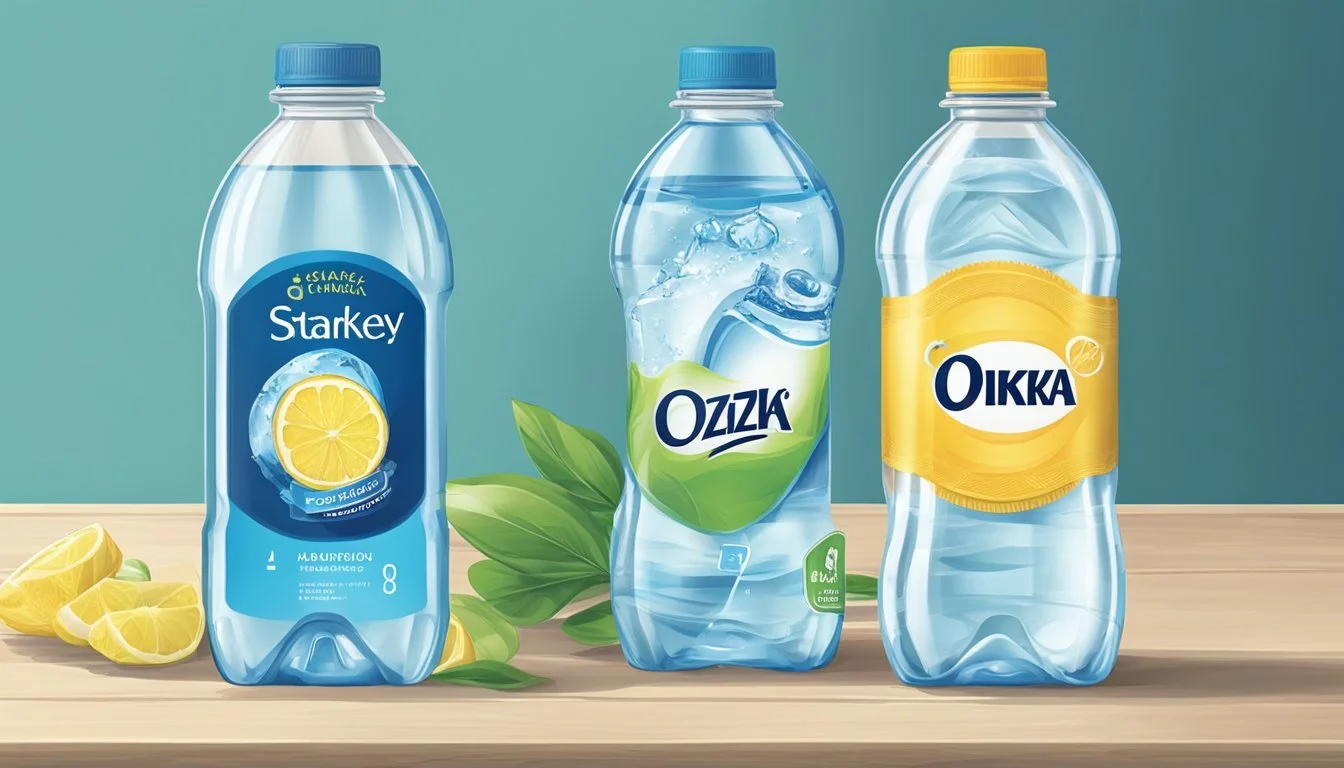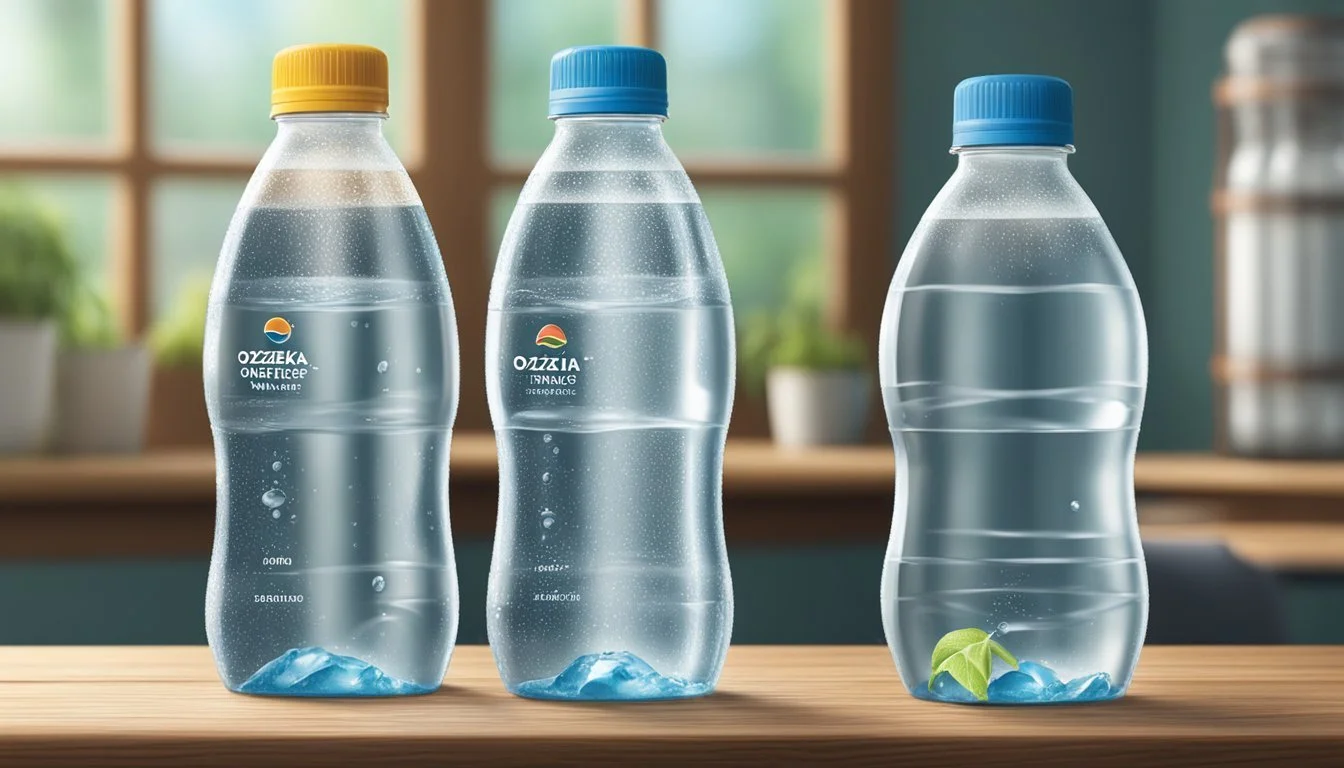Ozarka vs. Starkey
Comparing Quality and Taste
Choosing the right bottled water can make a noticeable difference in both taste and overall hydration experience. This comparison focuses on Ozarka and Starkey, two prominent brands in the market with distinct qualities that set them apart. For those seeking locally sourced water, Ozarka stands out as it sources its water from various natural springs in Texas. In contrast, Starkey boasts its pristine water source from a geothermal spring in Idaho, often highlighted for its unique mineral content.
Ozarka's selling point lies in its regional sourcing, making it a staple in Texas and surrounding areas. Bottled in larger quantities, it often provides a cost-effective option for consumers. Meanwhile, Starkey prides itself on offering water that is naturally filtered through volcanic rock, which some argue enhances its purity and taste.
When comparing the two, Starkey might appeal to those curious about the geological purity of their water, while Ozarka might be the go-to for those prioritizing cost-efficiency and local sourcing. This article dives deeper into these differences, aligning each brand's strengths with what might matter most to you.
Understanding Bottled Water
Bottled water comes in various types, each distinguished by its source and treatment process. It often caters to specific preferences for hydration, quality, and taste.
Origin and Sources
Bottled water can be classified based on its origin, such as spring, mineral, or purified sources. Spring water is sourced from underground springs and is often marketed for its natural purity and taste. Natural spring water is usually bottled at the source and is known for its cleanliness and mineral content.
In contrast, purified water undergoes rigorous treatments such as reverse osmosis to remove impurities. The source could be lakes, rivers, or even municipal supplies. The treatment process enhances its quality, making it safe for consumption.
The water source impacts flavor and mineral content. For example, spring water typically contains minerals like calcium and magnesium, contributing to its taste. Purified water may lack these minerals but is highly purified.
Types of Bottled Water
There are several types of bottled water, each offering unique qualities. The key types include spring water, mineral water, and purified water.
Spring water is naturally filtered and collected from underground formations. It must meet specific standards to retain its designation, preserving the minerals present in it.
Mineral water also comes from underground sources and must contain a specific amount of dissolved minerals. It is often praised for its health benefits due to its natural mineral content.
Purified water undergoes processes like reverse osmosis or distillation to remove impurities. This type of water is often chosen for its purity and consistency, though it may lack the minerals found in natural sources.
By understanding these types and their characteristics, consumers can make informed choices to suit their hydration needs.
Ozarka and Starkey Brand Profiles
This section covers the origin, sourcing, and key attributes of Ozarka and Starkey bottled water brands, focusing on what distinguishes each in the market.
Ozarka Water: Brand Overview
Ozarka is a renowned bottled water brand in the South Central United States. Established in 1905 in Eureka Springs, Arkansas, the company sources its water from natural springs across the region.
Ozarka water is noted for its spring water origin, making it a preferred choice for those who value naturally sourced hydration. The brand is owned by BlueTriton Brands, formerly part of Nestlé, and adheres to the guidelines of the International Bottled Water Association (IBWA).
Ozarka's market presence spans across Arkansas, Texas, Oklahoma, Louisiana, and nearby states. Its availability predominantly in larger quantities enables it to offer cost-effective hydration solutions.
Starkey Water: Brand Overview
Starkey Water, a prominent bottled water brand, sources its product from geothermal springs located in the western United States. Starkey emphasizes its single-source origin, ensuring each bottle contains water from the same spring, contributing to its unique taste and mineral profile.
Starkey is part of the Idaho-based Albertsons Companies, helping it maintain strict quality and purity standards. The water is known for its minimal processing, retaining the natural minerals and elements that contribute to its appeal.
Starkey also follows IBWA standards, assuring consumers of its commitment to quality and safety. The brand has earned acclaim for its distinctive, smooth taste, which is a direct result of its geothermal sourcing.
Quality and Purity Analysis
In comparing Ozarka and Starkey bottled water, it's essential to examine both the quality and purity of each brand. This involves evaluating the water's overall quality and the adherence to purity standards while considering potential contaminants.
Evaluating Water Quality
Ozarka sources its water from local springs in Texas. It emphasizes natural spring water that is high in minerals. The quality is maintained through rigorous testing, ensuring a clean and refreshing taste. Their water often comes with typical mineral contents like calcium and magnesium.
Starkey, on the other hand, sources its water from a geothermal spring in Idaho. Starkey claims a rich mineral profile, including silica, which they believe enhances taste. Regularly tested, their water meets stringent quality standards, offering a slightly alkaline pH level.
Comparison Table:
Brand Source Location Key Minerals pH Level Ozarka Local Springs in Texas Calcium, Magnesium ~7.5 Starkey Geothermal Spring in Idaho Silica, Potassium ~8
Purity Standards and Contaminants
Both brands comply with FDA regulations, ensuring their products meet safety and purity standards. Ozarka subjects its water to purification processes like micro-filtration and UV lighting to remove potential contaminants.
Starkey also adheres to EPA guidelines, regularly testing for contaminants including heavy metals, lead, and PFAS chemicals. Starkey's water sometimes faces scrutiny due to naturally occurring arsenic, which they keep within safe drinking levels as defined by health authorities.
Both companies prioritize consumer safety by rigorously testing and maintaining transparency regarding their water's purity levels. However, the slight presence of arsenic in Starkey's water may concern some consumers, despite being within legal safety limits.
By examining each brand's approach to quality and purity, consumers can make more informed choices about their bottled water preferences.
Health and Hydration Benefits
When comparing Ozarka and Starkey bottled water brands, it is essential to evaluate their potential health and hydration benefits. Key considerations include their electrolyte and mineral content as well as their pH levels, which can have varying impacts on overall well-being.
Electrolytes and Mineral Content
Electrolytes are vital for maintaining the body's fluid balance, muscle function, and nerve signaling. Starkey water naturally contains minerals like calcium, magnesium, and potassium, which contribute to its slightly alkaline pH. These minerals can help replenish electrolytes lost through sweat.
Ozarka sources its water from springs in Texas, providing a range of naturally occurring minerals. Calcium and magnesium are among the key electrolytes in Ozarka water. They support bone health and muscle function, which is beneficial for active individuals. The mineral content in Ozarka can vary based on its multiple spring sources, requiring consumers to check specific bottling details for an accurate profile.
pH Levels and Health Implications
The pH level of water measures its acidity or alkalinity, impacting how it interacts with the body. Starkey water typically has a pH around 9.6, making it one of the more alkaline bottled waters available. Alkaline water can neutralize stomach acid and reduce acid reflux, according to some studies.
Ozarka has a more neutral pH, typically in the range of 7. It is considered safe for everyday consumption without altering the body's natural pH balance. Although some claim benefits of high-pH water, most health experts agree that neutral or slightly alkaline water meets the body's hydration needs effectively.
Taste Profiles and Consumer Preferences
Ozarka and Starkey bottled waters offer distinct taste profiles and cater to different consumer preferences. While both brands emphasize quality, their unique characteristics set them apart in terms of water taste and mouthfeel.
Determinants of Water Taste
The taste of bottled water often depends on its source and processing methods. Ozarka sources its water from natural springs in Texas, giving it a crisp and refreshing taste. This natural origin contributes to its popularity among those who prefer spring water.
Starkey, on the other hand, offers an unusual flavor profile. Described as thick with a savory note, Starkey's taste stands out among common bottled waters. This distinctive taste can be polarizing but also attracts a niche audience that enjoys unique flavors.
Mineral content also affects taste. Ozarka's water contains naturally occurring minerals, enhancing its clean flavor. Starkey’s mineral composition adds to its complex taste, making it a topic of interest for consumers seeking something different.
Mouthfeel and Personal Preferences
Mouthfeel significantly influences consumer preferences for bottled water. Ozarka is known for its robust and refreshing texture, which many find invigorating. This mouthfeel appeals to those who enjoy a more natural and lively sensation from their water.
In contrast, Starkey provides a much thicker and almost savory mouthfeel. This can be quite surprising for new consumers. The mouthfeel is creamier than typical bottled waters, offering a unique experience.
Personal preference heavily dictates choice. Those who favor traditional spring water sensations may lean towards Ozarka. Individuals seeking a unique and memorable drink experience might prefer Starkey. Both brands cater to different tastes, ensuring a variety of options for discerning consumers.
Environmental and Sustainability Considerations
When choosing between Ozarka and Starkey bottled water, considerations around environmental impact and sustainability practices are crucial. Key factors include the types of materials used for bottles, recycling efforts, and overall sustainability initiatives.
Bottled Water and Environmental Impact
Ozarka and Starkey rely on plastic bottles for packaging, which has a notable environmental footprint. Plastic waste management is a significant concern, as improperly disposed bottles contribute to pollution. Ozarka's bottles are often marketed as BPA-free, reducing the risk of harmful chemicals leaching into the water.
Plastic waste from these bottles is a key factor in their environmental footprint. Both brands encourage recycling, but compliance varies among consumers. Efforts to reduce plastic usage can significantly impact environmental conservation.
Sustainability Efforts and Eco-Friendly Practices
Starkey emphasizes its use of sustainable practices in water sourcing. They prioritize eco-friendly bottling processes to minimize the ecological impact.
Ozarka also promotes eco-friendly practices, such as recycling programs aimed at reducing waste. Their initiatives include campaigns to educate consumers on proper disposal methods, thus enhancing their sustainability footprint.
Efforts to use renewable resources and improve bottle design for better recyclability are part of both brands' strategies.
These practices illustrate their commitment to reducing the environmental footprint while providing quality bottled water.
Packaging and Convenience Factors
Ozarka and Starkey both focus on bottled waters that cater to a wide range of consumers.
Packaging is crucial for both brands. Ozarka typically uses plastic bottles, designed for lightweight and easy transportation. Starkey, on the other hand, often employs glass bottles, which can be recycled more efficiently and are perceived as more premium.
In terms of convenience, plastic bottles from Ozarka are more portable and less prone to breakage, making them ideal for on-the-go consumption. Glass bottles from Starkey, while heavier, may keep the water cooler for longer periods, adding a touch of luxury.
Recycling and environmental impact play significant roles. Ozarka’s plastic bottles contribute to environmental waste if not properly recycled. Starkey’s glass bottles, though more sustainable, require careful handling to avoid breakage.
Sizes and formats vary for both brands. Ozarka offers multiple sizes, from small 8 oz bottles to larger 1-gallon containers. Starkey provides fewer size options, focusing more on standard 16.9 oz and 32 oz bottles.
In retail environments, Ozarka's versatility extends to multi-packs, increasing convenience for bulk buyers. Starkey's emphasis on individual bottles with refined packaging appeals to consumers seeking quality over quantity.
Therefore, when considering packaging and convenience, Ozarka's plastic bottles may appeal more to active, eco-conscious individuals, while Starkey's glass bottles suit those prioritizing sustainability and a premium experience.
Comparative Analysis
This section examines how Ozarka and Starkey fare based on their market presence, consumer trust, price point, and accessibility. Identifying key differences will assist in understanding which brand might be a better choice.
Market Presence and Consumer Trust
Ozarka holds a significant position in the market, particularly in Texas, where it is sourced. Its local sourcing emphasizes natural spring water, a feature that resonates well with consumers. The brand has built a loyal customer base due to its reliability and consistency.
Starkey positions itself as a premium brand. With higher emphasis on quality and purity, Starkey has attracted consumers looking for higher-end water options. Despite its premium status, Starkey’s market presence is primarily national, offering a counterpoint to Ozarka's regional dominance.
Price Point and Accessibility
Ozarka is generally more affordable and widely available, making it a convenient choice for many. It is often sold in large quantities, which can further reduce the cost per bottle, aligning with budget-conscious consumers.
On the other hand, Starkey, as a premium brand, has a higher price point. Its superior quality and distinct sourcing justify the cost for many consumers seeking premium bottled water. However, this also makes Starkey less accessible for those prioritizing cost and convenience over premium attributes.
Consumer Insights and Feedback
Consumer feedback on Ozarka and Starkey bottled water provides a detailed look into preferences and perceptions of these brands. Key points include insights from social media platforms and consumer reviews, which reveal diverse opinions and experiences.
Social Media Sentiment
Social media platforms like Twitter feature numerous mentions of Ozarka and Starkey bottled water. Ozarka is frequently praised for its crisp taste and local Texas origin. The brand often resonates well with consumers who appreciate its natural spring water.
In contrast, Starkey tends to attract attention for its unique mineral content and sourcing from deep geothermal springs in Idaho. Some users highlight its distinct, more mineral-rich flavor, though there are mixed reactions on whether this taste is pleasant.
Various YouTube reviews also show consumers comparing both brands in blind taste tests. Ozarka consistently scores high for its refreshing quality, while Starkey’s mineral profile is noted both positively and negatively, depending on personal preference.
Consumer Reviews and Ratings
Consumer reviews on major retail platforms offer a snapshot of general satisfaction with both brands.
Ozarka generally receives strong ratings for its affordability, consistent taste, and reliable availability. Numerous reviews mention the value provided by purchasing in bulk.
Starkey, while often praised for its quality and unique taste, receives more varied ratings. Some consumers are enthusiastic about its alkaline pH and distinctive mineral profile. Others may find the flavor unconventional compared to traditional spring water.
In summarizing these reviews into a table:
Brand Pros Cons Ozarka Affordable, consistent taste, widely available Regional price variations Starkey Unique mineral taste, alkaline pH, high quality Higher price, polarizing flavor
These insights underscore the unique positioning of each brand in the bottled water market.
Final Considerations
When it comes to choosing between Ozarka and Starkey bottled water, several key factors such as taste, source, mineral content, and price should be taken into account. This section aims to provide concise insights to assist in making an informed choice.
Key Takeaways
Ozarka:
Source: Locally sourced from Texas.
Taste: Generally appreciated for its clean and crisp flavor.
Cost: Prices can vary depending on the region.
Availability: Widely available, often sold in bulk which can reduce per-bottle cost.
Starkey:
Source: Artisan spring in the Snake River Plain, Idaho.
Taste: Known for its distinct mineral flavor.
Cost: Generally higher, reflecting its premium positioning.
Availability: Not as widely available, typically found in specialty stores or online.
Making an Informed Decision
Select the water that aligns best with your priorities. Ozarka is a practical option for daily hydration needs due to its wide availability and reasonable cost. Its consistent quality makes it a dependable choice.
Starkey, with its unique taste and premium sourcing, might appeal to those seeking a higher-end bottled water experience. Despite its higher price, it offers a distinctive mineral profile that some find particularly appealing.
Bottom Line: Ozarka appeals to budget-conscious consumers who value accessibility and consistent taste. Starkey caters to those willing to invest more for a unique, artisanal option.
Tip: Consider tasting samples of both brands if possible before making a bulk purchase.
More About Ozarka
Mountain Valley Spring Water vs Ozarka: Which Bottled Water is Better?
Ozarka vs Kirkland Signature: Which Bottled Water is Better?
Ozarka vs Richard's Rainwater: Which Bottled Water is Better?
Ozarka vs Whole Foods Italian Still Mineral water: Which Bottled Water is Better?
More About Starkey
Icelandic Glacial vs Starkey: Which Bottled Water is Better?
Mountain Valley Spring Water vs Starkey: Which Bottled Water is Better?
Starkey vs Kirkland Signature: Which Bottled Water is Better?
Starkey vs Richard's Rainwater: Which Bottled Water is Better?
Starkey vs Whole Foods Italian Still Mineral water: Which Bottled Water is Better?

